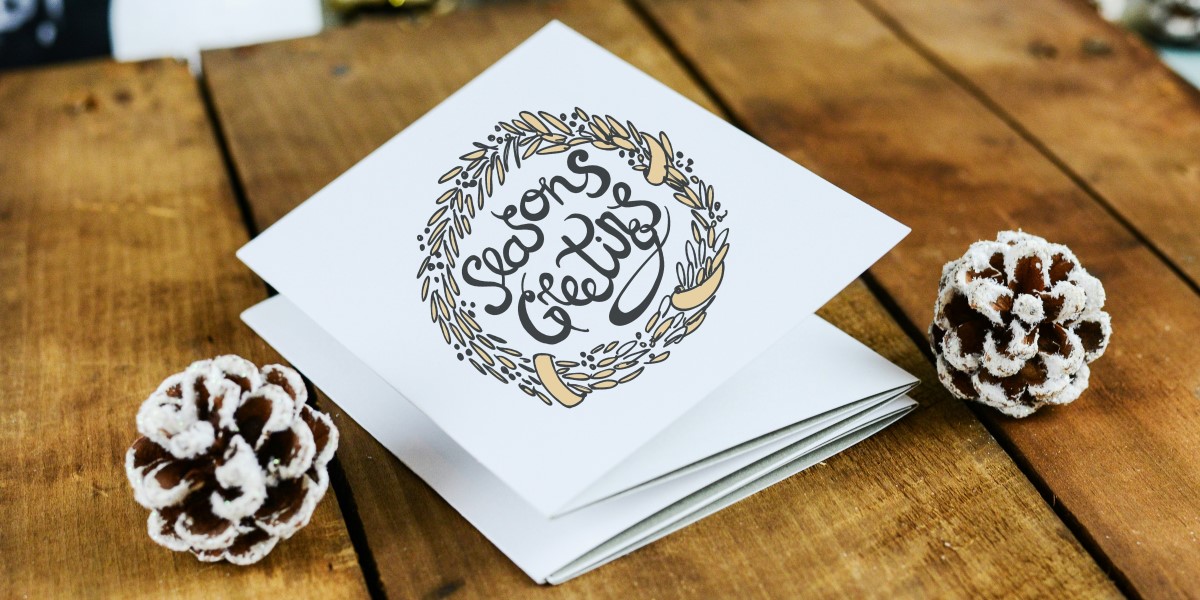Holiday greetings are a beloved practice that helps people connect and share happiness during special times of the year. Over time, the way these greetings are sent has changed, with digital cards becoming a popular choice alongside traditional paper ones. This change often leads to a question about which type of card truly gets more appreciation from those who receive it.
Read also: How to Use Embroidery to Customize Holiday Apparel for Kids
Why Do Digital Cards Attract So Many People Today?

Digital cards have become more and more popular as technology advances and communication habits shift. These modern greetings offer a straightforward approach to sending well wishes. One of the biggest upsides is how easy and quick they are to send. Digital cards can be designed, personalized, and delivered in just a few moments, making them ideal for individuals with busy schedules or for those last-minute holiday messages. Recipients can also get them instantly, no matter where they are in the world.
Another important aspect of digital cards is their minimal impact on the environment. Unlike paper cards, which need trees and printing materials, digital versions cut out the need for physical resources entirely. This helps reduce waste and save natural resources, appealing to those who prioritize eco-friendly choices. Digital card platforms also provide many ways to make greetings unique. Senders can customize designs, add personal messages, include animations, and even incorporate music to create a distinct and memorable experience. This flexibility makes digital cards quite adaptable and engaging. Additionally, sending digital cards is generally kinder to the wallet than sending physical ones. Many online platforms offer free or low-cost templates, and there are no expenses for printing or postage, which is especially appealing for larger groups or businesses sending out many greetings.
What Keeps Physical Cards a Cherished Part of the Holidays?

Despite the growth of digital options, physical cards remain a deeply loved choice for many people. They offer a tangible quality that digital cards simply cannot match. Holding a card in one’s hands, feeling the texture of the paper, and seeing the sender’s actual handwriting adds a personal touch that truly resonates with recipients. This physical presence often brings about feelings of warmth and connection.
Receiving a physical card can also spark a sense of nostalgia and personal connection. These cards are more likely to be displayed in homes or kept as special mementos, preserving memories in a way that digital cards, often living on a screen, cannot. For many, sending and getting physical cards is a treasured practice, reflecting effort and thoughtfulness. This gesture often feels more meaningful, particularly in communities where handwritten notes are highly valued. Unlike the instant nature of digital greetings, physical cards take time to arrive, building a sense of anticipation. This process adds to the excitement of the holiday season, turning the act of receiving a card into a special event.
How Do Digital and Physical Cards Compare in Key Areas?
When looking at digital versus physical cards, several factors highlight their differences in appreciation. Environmentally, digital cards are eco-friendly because they don’t use paper, ink, or require shipping. Physical cards, however, are often seen as having a larger environmental footprint due to paper use and transportation. Yet, cards made from recycled materials can lessen this impact.
From a cost perspective, digital cards are typically cheaper, with no printing or mailing expenses, and many free choices are available. Physical cards are more expensive due to costs for printing, postage, and options for premium materials like embossed or glittered designs. In terms of sentimental value, while digital cards offer personalization, they lack the physical presence that makes paper cards memorable keepsakes. Physical cards, being tangible and lasting, often hold greater sentimental value and are frequently saved for years. For convenience, digital cards are easy to create and send instantly, making them suitable for busy individuals. Physical cards, however, require more effort in writing, addressing, and mailing, but this perceived effort can actually increase the gesture’s value in the recipient’s eyes.
How Do Culture, Generations, and Customization Influence Card Choice?
Cultural values play a significant role in determining how much digital or physical cards are appreciated. In many Western cultures, physical holiday cards have a long history and are linked to customs like family newsletters or personal notes. Yet, the ease of digital cards is gaining acceptance, particularly among younger generations. In some Eastern cultures, handwritten messages and physical tokens of appreciation are deeply valued. Digital cards might not carry the same weight in these settings, where personal effort is a strong sign of sincerity.
Differences across generations also impact preferences. Younger generations, who are very used to digital communication, often favor digital cards for their convenience and interactive features. Older generations, conversely, might lean toward physical cards, valuing their tangibility and traditional appeal. Both types of cards offer ways to personalize greetings, but the methods and extent vary. Digital cards can include dynamic features like animation, sound, and interactivity, making them very engaging, and offer a wide range of templates to match the recipient or occasion. Physical cards allow for heartfelt handwritten messages and a choice of materials, finishes, and embellishments for a unique look. Handcrafted cards also offer full creative freedom, showcasing the sender’s effort and thoughtfulness.
Read also: Tips to Manage Your Finances During the Christmas Holidays
Which Type of Holiday Greeting Gathers More Appreciation?
Ultimately, the choice between digital and physical cards often comes down to the sender’s intent, the recipient’s preferences, and the event’s context. Digital cards are modern, convenient, and environmentally friendly, making them a great option for those who prioritize efficiency. Physical cards, meanwhile, offer sentimental value, tradition, and a tangible connection that many recipients deeply value.
The most meaningful holiday greeting is one that genuinely shows thoughtfulness and care. By considering the circumstances, the connection with the recipient, and the specific message intended, one can choose the type of card that best expresses the holiday spirit.
















